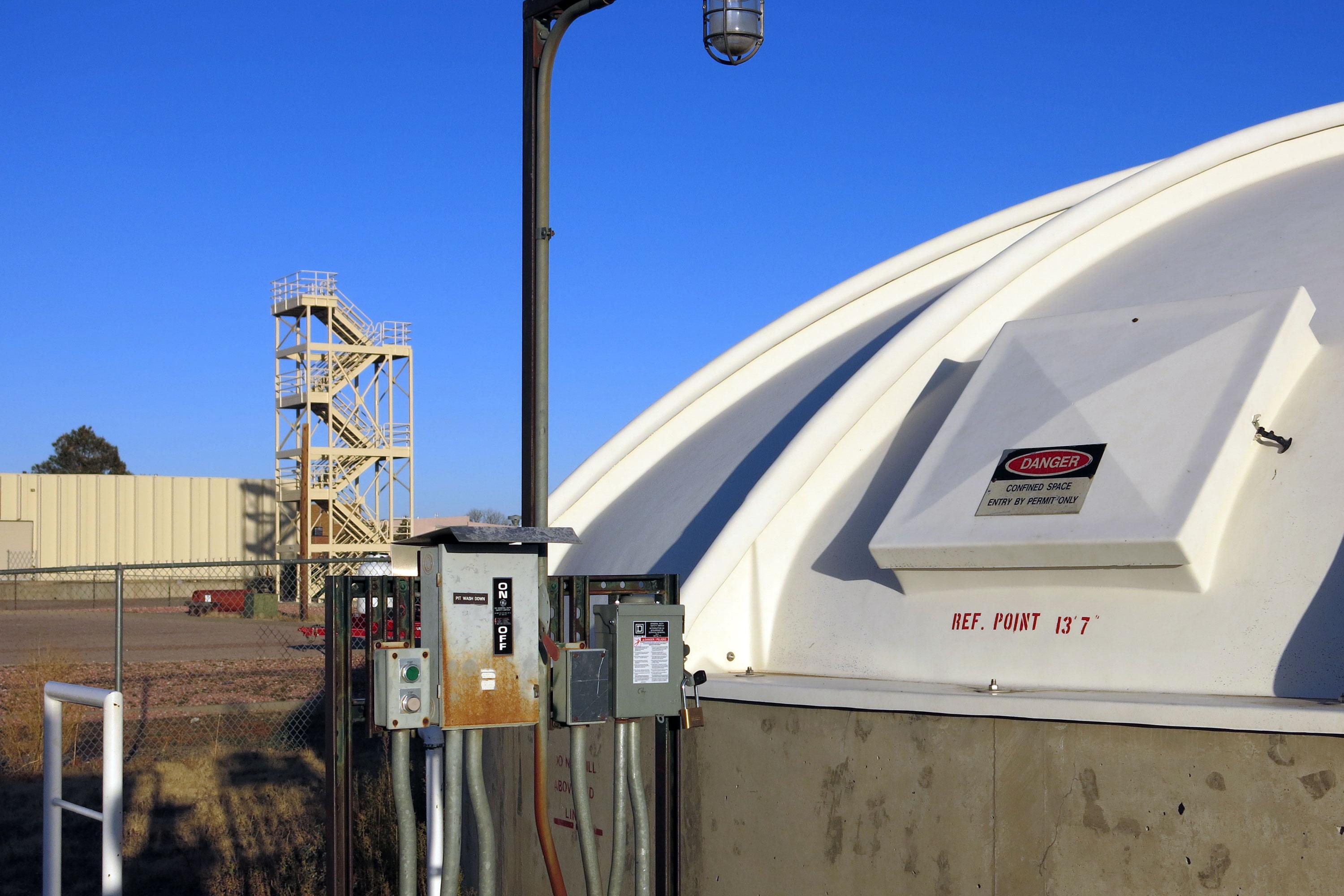
A green drilling machine bobs up and down as it burrows into the ground on Peterson Air Force base.
What’s going on? Lt. Col. Chad Gemeinhardt, commander the 21st Civil Engineer Squadron, explains they’re drilling for soil samples. “Once they get down to the water level. They’re going to install a monitoring well.”
The sight of a drilling rig on an Air Force base may seem unusual. The work to drill 17 wells is part of an effort at Peterson to understand how use of a firefighting foam with perfluorinated chemicals may have seeped into the groundwater.
The Environmental Protection Agency has linked PFCs to low birth weights and forms of cancer. The base-adjacent town of Fountain and Security-Widefield, who both pull water from an underground aquifer, became one of 63 areas across the country to exceed the EPA issued federal health advisory.
A preliminary assessment on base identified six specific points -- former training sites, fire department sites, and hangers -- where fire fighting foam with PFCs could have entered the environment. Now the military is investigating each of those sites in depth, with a full report expected in mid 2017.
On Peterson AFB, military actively drilling so it can test groundwater near fire training area for PFCs pic.twitter.com/1NhynmGtGK
The firefighting foam in question is known as A-FFF: Aqueous Film Forming Foam. The Air Force began to use it in the 1970s to put out fires from lots of gasoline or jet fuel.
At a news conference, the Air Force confirmed details of one practice that could have had an impact to nearby groundwater. Col. Douglas Schiess said the base released PFC laden water about three times a year into the Colorado Springs sewer system. Those releases happened from a fire training system from 1990 to August of 2016.
“The last time that we discharged water into the sewer system was early August,” he said.

Col. Schiess said soon after that release, the Air Force tested water in its system for PFCs and found high concentrations. The decision was made to no longer “discharge [the water] into the sanitation system.”
The practice spanned 26 years. Schiess clarified that reports of a more recent discharge of 150,000 gallons in October were made in error by the Air Force.
Peterson isn’t the only base grappling with these issues.
Deputy Assistant Secretary of the Air Force for Environment, Safety and Infrastructure Mark Correll called the PFC contamination issue “a really big deal.” He said there are investigations at 183 sites across the country. The inspections alone are estimated to cost $250 million, with another $2 billion needed for cleanup.
Meantime, the Air Force has already started phasing out the PFC-laden firefighting foam at Peterson with something more environmentally friendly. The move -- expected to take 14 months, Correll said -- will eventually happen across all Air Force installations.









